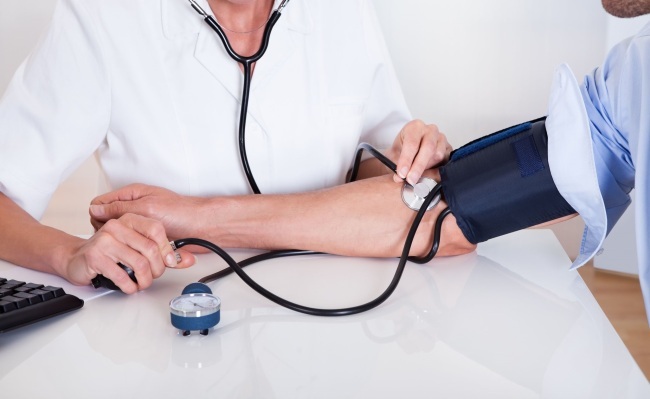Nearly 60% of S. Koreans suffer health problems: study
By Kim Da-solPublished : Nov. 27, 2016 - 17:10
Nearly 6 in 10 South Korean adults have an abnormal health status due to diseases or suspected diseases, a government report based on a public health examination showed Sunday.
According to the report issued by the National Health Insurance Service, 57.2 percent of South Koreans who received health examinations in 2015 were diagnosed with or were suspected of having diseases. It said 18.7 percent have diseases, with 38.5 percent having suspected cases of diseases.
Only 7.9 percent were found to be healthy, while the health of 34.9 percent were judged to be relatively sound.
Out of some 17 million South Koreans eligible for the state-funded program, some 13 million took medical examinations last year.
According to the report issued by the National Health Insurance Service, 57.2 percent of South Koreans who received health examinations in 2015 were diagnosed with or were suspected of having diseases. It said 18.7 percent have diseases, with 38.5 percent having suspected cases of diseases.
Only 7.9 percent were found to be healthy, while the health of 34.9 percent were judged to be relatively sound.
Out of some 17 million South Koreans eligible for the state-funded program, some 13 million took medical examinations last year.

Of the 13.2 million, 479,000 were diagnosed with suspected high blood pressure or diabetes, while nearly 90,000 South Koreans were confirmed with diabetes and 150,000 with high blood pressure last year.
Data showed that among 179,000 patients tested for diabetes, 50.1 percent or 90,000 were diagnosed with the disease. Out of 300,000 tested for high blood pressure, 51.4 percent or 154,000 were confirmed to have the disease. The number of patients diagnosed with these two diseases was higher than 2010, when 9.9 percent and 3.7 percent fewer patients were diagnosed with diabetes and high blood pressure, respectively.
By age group, those in their 40s showed the highest percentage of those suffering from diabetes and high blood pressure, with 52.5 percent suffering from diabetes and 53.2 percent suffering from high blood pressure, an increase of 3.5 percent and 3.7 percentage points from last year, respectively.
Meanwhile, about 3.3 million South Koreans were diagnosed with metabolic syndrome. Some 10 million had at least one metabolic syndrome risk factor, meaning that they have either high blood pressure, high blood sugar, abdominal obesity, high hypertriglyceridemia level or low HDL cholesterol levels.
Slightly less than 22 percent said they smoke or have smoked at least 100 cigarettes, a 1.7 percentage point decrease from 2014.
About 34 percent were obese, with a BMI level higher than 25. BMI stands for Body Mass Index, a measure of body size based on height and weight. A normal BMI ranges from 19-25.
Men in their 30s and 40s showed the highest obesity rate at 44 percent, while women in their 60s and 70s were the most obese at 38.4 percent, compared to other age groups.
The overall obesity rate went up by 1.3 percent points from the 2014 data.
The National Health Insurance Corp. operates the state-run medical examination once every one or two years for workers here, while those suspected of having high blood pressure, diabetes or are aged over 70 and classified as high-risk patients, are required to undergo a medical checkup twice every one or two years.
By Kim Da-sol & Yonhap (ddd@heraldcorp.com)
Data showed that among 179,000 patients tested for diabetes, 50.1 percent or 90,000 were diagnosed with the disease. Out of 300,000 tested for high blood pressure, 51.4 percent or 154,000 were confirmed to have the disease. The number of patients diagnosed with these two diseases was higher than 2010, when 9.9 percent and 3.7 percent fewer patients were diagnosed with diabetes and high blood pressure, respectively.
By age group, those in their 40s showed the highest percentage of those suffering from diabetes and high blood pressure, with 52.5 percent suffering from diabetes and 53.2 percent suffering from high blood pressure, an increase of 3.5 percent and 3.7 percentage points from last year, respectively.
Meanwhile, about 3.3 million South Koreans were diagnosed with metabolic syndrome. Some 10 million had at least one metabolic syndrome risk factor, meaning that they have either high blood pressure, high blood sugar, abdominal obesity, high hypertriglyceridemia level or low HDL cholesterol levels.
Slightly less than 22 percent said they smoke or have smoked at least 100 cigarettes, a 1.7 percentage point decrease from 2014.
About 34 percent were obese, with a BMI level higher than 25. BMI stands for Body Mass Index, a measure of body size based on height and weight. A normal BMI ranges from 19-25.
Men in their 30s and 40s showed the highest obesity rate at 44 percent, while women in their 60s and 70s were the most obese at 38.4 percent, compared to other age groups.
The overall obesity rate went up by 1.3 percent points from the 2014 data.
The National Health Insurance Corp. operates the state-run medical examination once every one or two years for workers here, while those suspected of having high blood pressure, diabetes or are aged over 70 and classified as high-risk patients, are required to undergo a medical checkup twice every one or two years.
By Kim Da-sol & Yonhap (ddd@heraldcorp.com)












![[Today’s K-pop] BTS pop-up event to come to Seoul](http://res.heraldm.com/phpwas/restmb_idxmake.php?idx=644&simg=/content/image/2024/04/17/20240417050734_0.jpg&u=)





![[KH Explains] Hyundai's full hybrid edge to pay off amid slow transition to pure EVs](http://res.heraldm.com/phpwas/restmb_idxmake.php?idx=652&simg=/content/image/2024/04/18/20240418050645_0.jpg&u=20240419100350)

